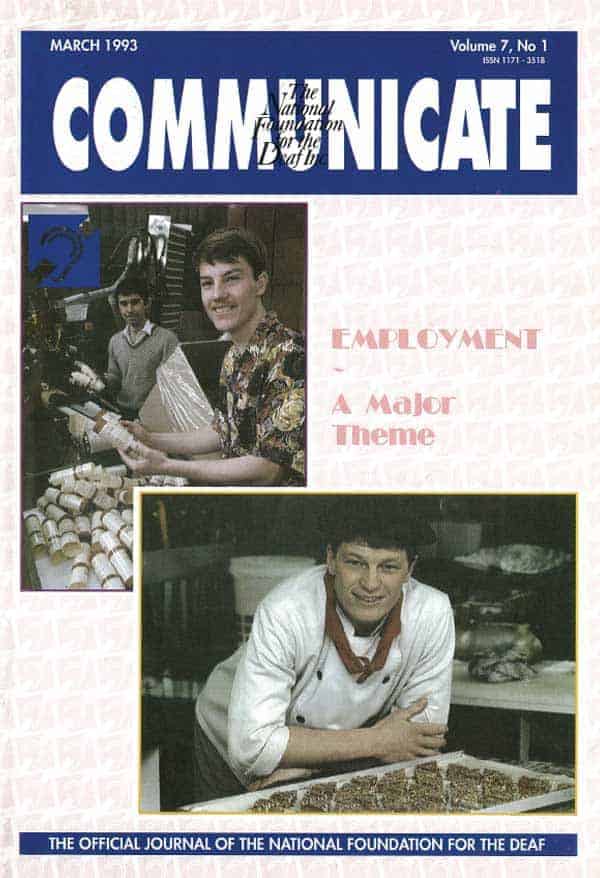
1984
publication – Taonga source: New Zealand Deaf News
NZ Deaf News: Spring 1984 (Vol. 21, No. 3)

1983
publication – Taonga source: New Zealand Deaf News
NZ Deaf News: July 1983

1990
publication – Taonga source: National Foundation for Deaf and Hard of Hearing
NFD Journal: March 1990 (Vol. 4, No. 1)


1992
publication – Taonga source: National Foundation for Deaf and Hard of Hearing
NFD Communicate: September 1992


1993
publication – Taonga source: National Foundation for Deaf and Hard of Hearing
NFD Communicate: December 1993


1990
publication – Taonga source: National Foundation for Deaf and Hard of Hearing
NFD Journal: September 1990 (Vol. 4, No. 3)


1983
video – Taonga source: Dulcie McKie
News Review – Deaf Student on Holiday
News Review features Stephen Leach, an Auckland Deaf student studying at Gallaudet College (now Gallaudet University).


1999
publication – Taonga source: National Foundation for Deaf and Hard of Hearing
NFD Communicate: Winter 1999


1998
publication – Taonga source: National Foundation for Deaf and Hard of Hearing
NFD Communicate: Autumn 1998


1988
publication – Taonga source: National Foundation for Deaf and Hard of Hearing
NFD Journal: September 1988 (Vol. 2, No. 3)


1992
publication – Taonga source: National Foundation for Deaf and Hard of Hearing
NFD Communicate: June 1992


1985
publication – Taonga source: New Zealand Deaf News
NZ Deaf News: Autumn 1985 (Vol. 22, No. 1)

1983
publication – Taonga source: New Zealand Deaf News
NZ Deaf News: March 1983 (Vol. 20, No. 2)

1993
publication – Taonga source: National Foundation for Deaf and Hard of Hearing
NFD Communicate: March 1993


1989
publication – Taonga source: New Zealand Deaf News
New Zealand Deaf News: Winter 1989 (Vol. 23. No. 2)

1989
publication – Taonga source: New Zealand Deaf News
NZ Deaf News: Autumn 1989 (Vol. 23. No. 1)

1991
publication – Taonga source: National Foundation for Deaf and Hard of Hearing
NFD Communicate: December 1991


1989
publication – Taonga source: New Zealand Deaf News
NZ Deaf News: Spring 1989 (Vol. 23, No. 3)

1995
publication – Taonga source: National Foundation for Deaf and Hard of Hearing
NFD Communicate: September 1995


1995
video – Taonga source: Television New Zealand Archive
A behind-the-scenes look at the Teletext system
During 'Deafness Awareness Week' in 1995, One Network News runs a news clip that highlights why Teletext is invaluable to the Deaf community. Patreena Bryan shares with us how captions give Deaf people equality.


1984
publication – Taonga source: New Zealand Deaf News
